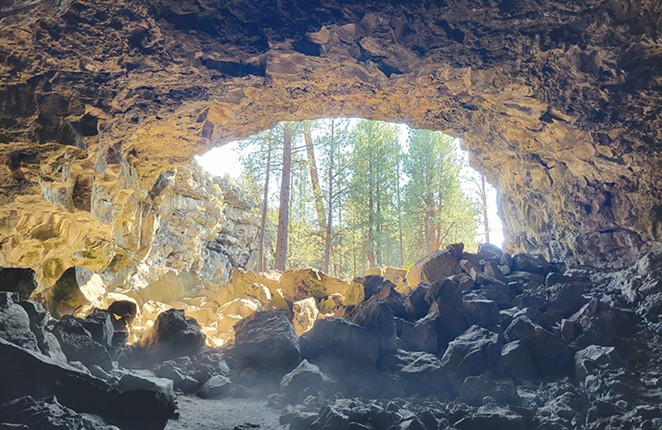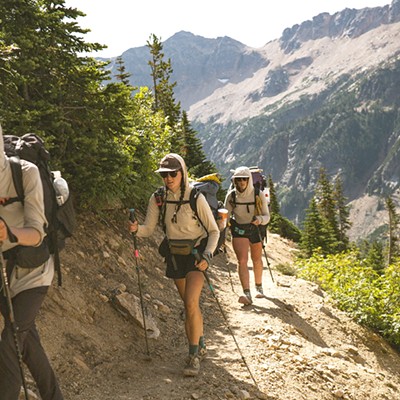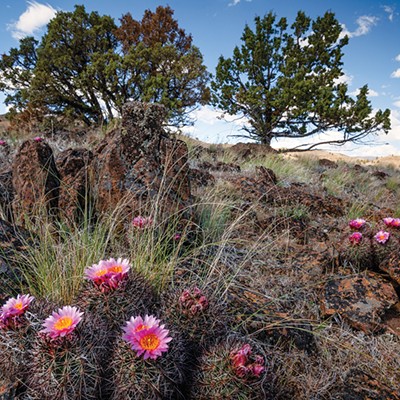Whether it's 95 degrees outside or 15, Central Oregon's local caves offer a scenic and unique underground adventure.
Because caves are not affected by surface weather patterns, they tend to hold a constant year-round temperature. In Central Oregon, caves stay between 42 and 45 degrees, no matter the season. Cold, dark and rugged, most of these sensitive ecosystems near Bend are lava tubes, or the result of volcanic activity and once- flowing lava. For first-time cave explorers, the experience might feel like entering a sci-fi movie, an entire underground world unlike anything above.
Deschutes County alone is home to the most caves in Oregon, over 800 identified by Oregon High Desert Grotto. Almost all of Central Oregon's caves are wild — lacking railings, walkways or lights — except for a select few with metal staircases at their entrances, like Boyd Cave, and the tourist attraction, Lava River Cave, that's part of the Newberry National Volcanic Monument.
Caves are surreal, and cavern landscapes can change dramatically in a very short distance. Total darkness. An eery, yet peaceful, quiet. Otherworldly earth formations that feel like the inside of a science textbook. Most caves require crawling, scooting, climbing, squeezing and duck-walking through narrow passages with rough terrain on all sides. Some tunnel passageways are tall enough to walk hunched over, and others showcase remarkably high ceilings. Many chambers, the cave version of a room, are often tall enough to stand comfortably.
Unlike limestone caves which can house stalagmites (column-like rock protrusions rising from the ground) and stalactites (icicle-shaped rock protrusions hanging from the ceiling) that form when calcium deposits collect via dripping water, most of Central Oregon's lava formed caves are rock, like basalt, and can't grow back. Many of these lava flows are as old as 80,000 years, remnants of the Newberry Volcano eruption and collapse event that formed it into the caldera it is today.
Caves are non-renewable resources, and human disturbance, including above-ground development with shifting Urban Growth Boundaries and vandalism like campfires, trash, spray paint and rock climbing, threaten these geological wonders. The hope is that more cave awareness will bring attention to their preservation, and proper education will mitigate further degradation.
The most notable resident of Central Oregon's caves are bats. Exceptionally sensitive to human disturbances that could be fatal, especially during hibernation and maternity, they're nocturnal, sleeping during the day, feeding at night. Bat hibernation typically runs November through February, when most caves are closed. Another fatal factor for bats residing in the Pacific Northwest is white-nose syndrome, a fungal disease which makes bats more active than usual, burning into their winter fat stores. It's strongly advised not to take clothing, equipment or gear that's been used in caves or mines outside of the PNW into local caves due to contamination risk.
Before setting off on one of these hidden explorations, here are some key things to know to stay safe and leave no trace to protect these extraordinary, underground habitats.
Only visit caves open to the public during permitted seasons. Some Central Oregon caves are permanently closed; others are open for guided tours by reservation only, many are closed through certain seasons to protect bats, and a few are open year-round.
A basic rule of thumb for what to bring — and not to bring — into a cave is to pack as little as possible, but enough to stay safe. Wear sturdy, closed-toe shoes, layered, warm clothing, gloves, a hard helmet and headlamp. Bring two additional light sources (with extra batteries), a friend or two (don't cave alone), water (no glass containers), snacks and somewhere to store your trash.
Leave your pets at home, and let someone above ground know when and where you're going and who's in your party.
Leave no trace! Only take pictures and leave only footprints. It is illegal to remove, tamper with or vandalize any cave features, including gates, and leaving behind any waste can seriously harm their fragile ecosystems.
Those craving a more structured cave experience can schedule a visit with Wanderlust Tours, or take a trip to the Lava River Cave. Protecting these historic natural wonders can be as simple as learning a few leave no trace basics, a little cave education and some common sense.























